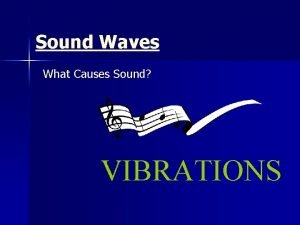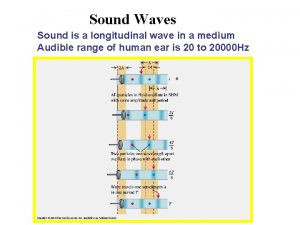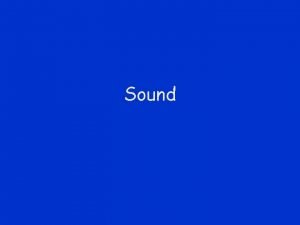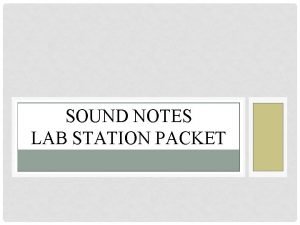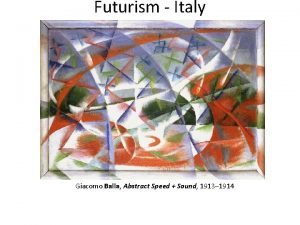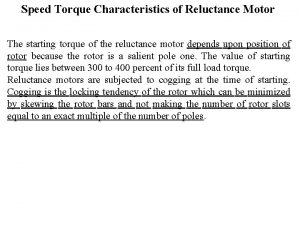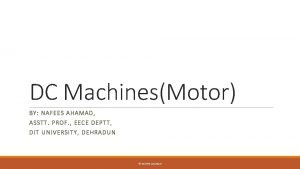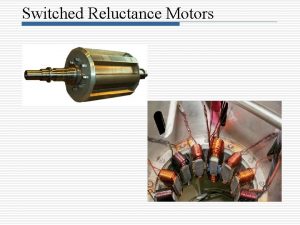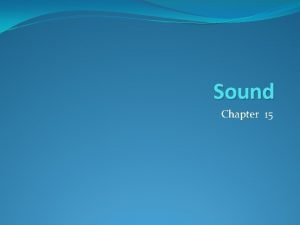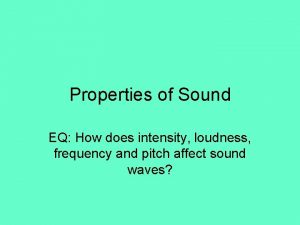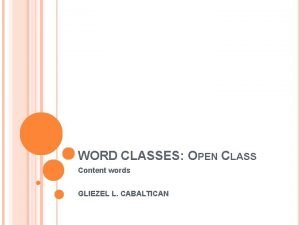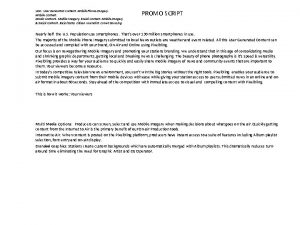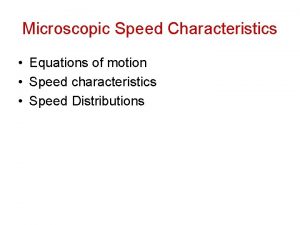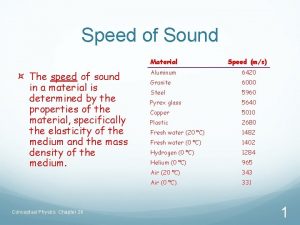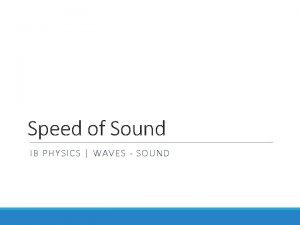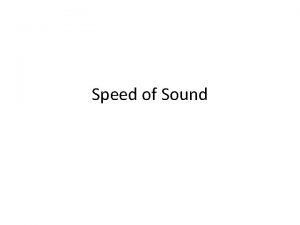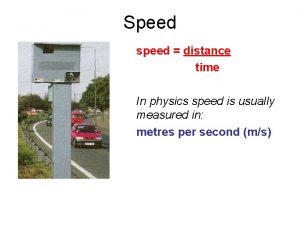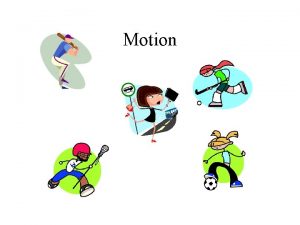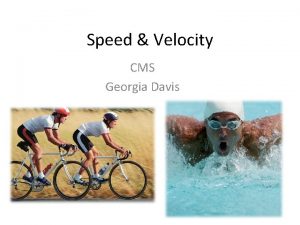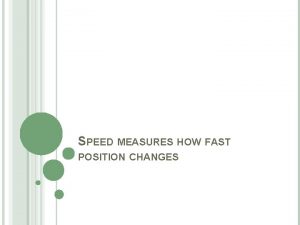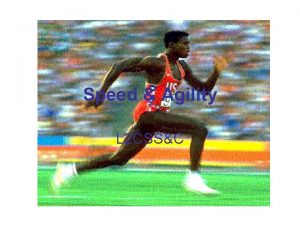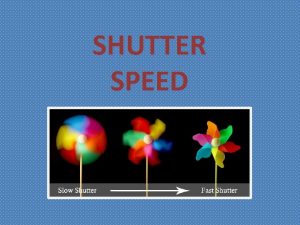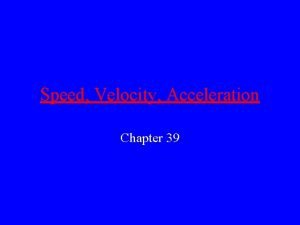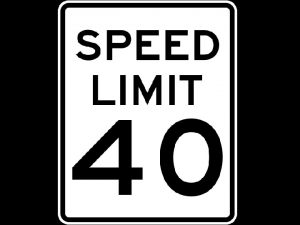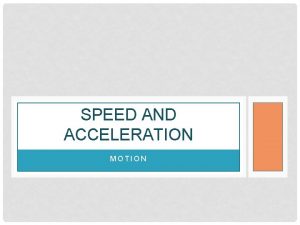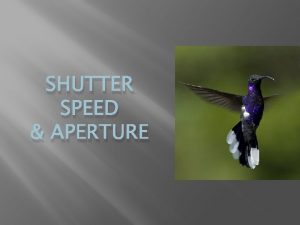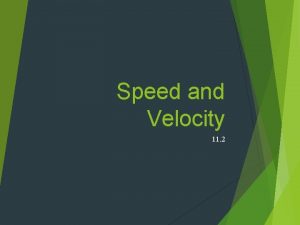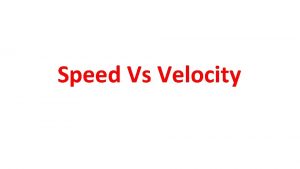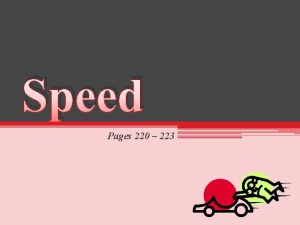Sound Content Sound Characteristics of Sound Speed of





























- Slides: 29

Sound

Content • Sound • Characteristics of Sound • Speed of Sound • Measuring sound • Intensity of Sound: Decibels • The Ear and Its Response • Sources of Sound • Interference of Sound Waves; Beats • Doppler Effect • Tuning Fork • Effects of Environmental Factors on Sound

Sound • Sound is a mechanical wave that can travel through any medium except a vacuum. • Vibrating solids, any rapid compression or expansion and many other are causes of sound. • Amplitude determines the intensity, loudness or volume of sound. • Frequency of sound relates to the ‘pitch’ of sound. High frequency sounds are ‘high pitched’. • Humans can hear sound between 20 Hz and 20 k. Hz.

• The speed of sound is different in different materials; in general, it is slowest in gases, faster in liquids, and fastest in solids.

Characteristics of Sound Loudness: related to intensity wave of the sound Pitch: related to frequency. Audible range: about 20 Hz to 20, 000 Hz; upper limit decreases with age Ultrasound: above 20, 000 Hz; see ultrasonic camera focusing below Infrasound: below 20 Hz

Speed of Sound • Speed of sound depends on the medium that it is travelling in like other waves. • Sound travels faster in solids and liquids than in gasses. • The speed of sound in air is approximately 330 m/s. • The speed of sound increases with temperature.

Measuring Sound • Sound energy is measured in Amplitude and Frequency. • Amplitude is measured in decibels (d. BA). 0 d. BA is the softest sound a human ear can pick and any sound over 85 d. BA can harm the ear. Normal vocal voices are around 65 d. BA. • More the sound pressure, less time it takes to harm a human ear. • Frequency measures the number of sound vibrations per second.

Intensity of Sound: Decibels The intensity of a wave is the energy transported per unit time across a unit area. The human ear can detect sounds with an intensity as low as 10 -12 W/m 2 and as high as 1 W/m 2. Perceived loudness, however, is not proportional to the intensity.

Intensity of Sound: Decibels An increase in sound level of 3 d. B, which is a doubling in intensity, is a very small change in loudness. In open areas, the intensity of sound diminishes with distance: However, in enclosed spaces this is complicated by reflections, and if sound travels through air the higher frequencies get preferentially absorbed.

The Ear and Its Response; Loudness

The Ear and Its Response; Loudness Outer ear: sound waves travel down the ear canal to the eardrum, which vibrates in response Middle ear: hammer, anvil, and stirrup transfer vibrations to inner ear Inner ear: cochlea transforms vibrational energy to electrical energy and sends signals to the brain

The Ear and its Response; Loudness The ear’s sensitivity varies with frequency. These curves translate the intensity into sound level at different frequencies.

Sources of Sound: Vibrating Strings and Air Columns Musical instruments produce sounds in various ways – vibrating strings, vibrating membranes, vibrating metal or wood shapes, vibrating air columns. The vibration may be started by plucking, striking, bowing, or blowing. The vibrations are transmitted to the air and then to our ears.

Sources of Sound: Vibrating Strings and Air Columns The strings on a guitar can be effectively shortened by fingering, raising the fundamental pitch. The pitch of a string of a given length can also be altered by using a string of different density.

Sources of Sound: Vibrating Strings and Air Columns A piano uses both methods to cover its more than seven-octave range – the lower strings (at bottom) are both much longer and much thicker than the higher ones.

Sources of Sound: Vibrating Strings and Air Columns Wind instruments create sound through standing waves in a column of air.

Sources of Sound: Vibrating Strings and Air Columns A tube open at both ends (most wind instruments) has pressure nodes, and therefore displacement antinodes, at the ends.

Sources of Sound: Vibrating Strings and Air Columns A tube closed at one end (some organ pipes) has a displacement node (and pressure antinode) at the closed end.

Interference of Sound Waves; Beats Sound waves interfere in the same way that other waves do in space.

Interference of Sound Waves; Beats Waves can also interfere in time, causing a phenomenon called beats. Beats are the slow “envelope” around two waves that are relatively close in frequency.

Doppler Effect The Doppler effect occurs when a source of sound is moving with respect to an observer.

Doppler Effect As can be seen in the previous image, a source moving toward an observer has a higher frequency and shorter wavelength; the opposite is true when a source is moving away from an observer.

Doppler Effect If we can figure out what the change in the wavelength is, we also know the change in the frequency.

Doppler Effect If the observer is moving with respect to the source, things are a bit different. The wavelength remains the same, but the wave speed is different for the observer.

Tuning Fork • Tuning fork is a small metal device used to tune musical instruments. • Invented in 1711 by John Shore. • Tuning forks are easy to used and are very accurate.

Tuning Fork • First the tuning fork must be struck for its tines to vibrate. • When tines vibrates, the fork create a sound. • Since tuning forks create an exact pitch, they can be used as a standard to tune many instruments. • Tuning forks have also been used in watches, medical therapy to test hearing problems.

Effects of Environmental Factors on Sound • Environmental effects change the velocity of the sound in air. • Factors such as temperature and humidity will affect the sound. • Even slight changes in temperature and humidity can lead to different sound levels.

Questions? ? ?

Thank you
 Carrier content vs real content
Carrier content vs real content Dynamic content vs static content
Dynamic content vs static content Speed time distance formula
Speed time distance formula One effect of high-speed driving is speed smear in which
One effect of high-speed driving is speed smear in which Speed detection of moving vehicle
Speed detection of moving vehicle Tiny astronauts
Tiny astronauts Waves means
Waves means What does the speed of sound depend on
What does the speed of sound depend on Speed of sound in fresh water
Speed of sound in fresh water What does the speed of sound depend on
What does the speed of sound depend on What factor affects the speed of sound wave?
What factor affects the speed of sound wave? Abstract speed and sound
Abstract speed and sound Torque speed characteristics of switched reluctance motor
Torque speed characteristics of switched reluctance motor Torque speed characteristics of dc series motor
Torque speed characteristics of dc series motor Speed torque characteristics of dc compound motor
Speed torque characteristics of dc compound motor Motor equivalent circuit
Motor equivalent circuit Torque speed characteristics of switched reluctance motor
Torque speed characteristics of switched reluctance motor “a sound mind is in a sound body”
“a sound mind is in a sound body” Properties of sound
Properties of sound Characteristics of sound
Characteristics of sound Academic language objective
Academic language objective Content words and function words
Content words and function words Open class of words
Open class of words What are content buckets
What are content buckets Introduction to dynamic web content
Introduction to dynamic web content Content specific vocabulary
Content specific vocabulary Content validity
Content validity Face validity definition
Face validity definition Forms of validity
Forms of validity Mobile user-generated content
Mobile user-generated content







